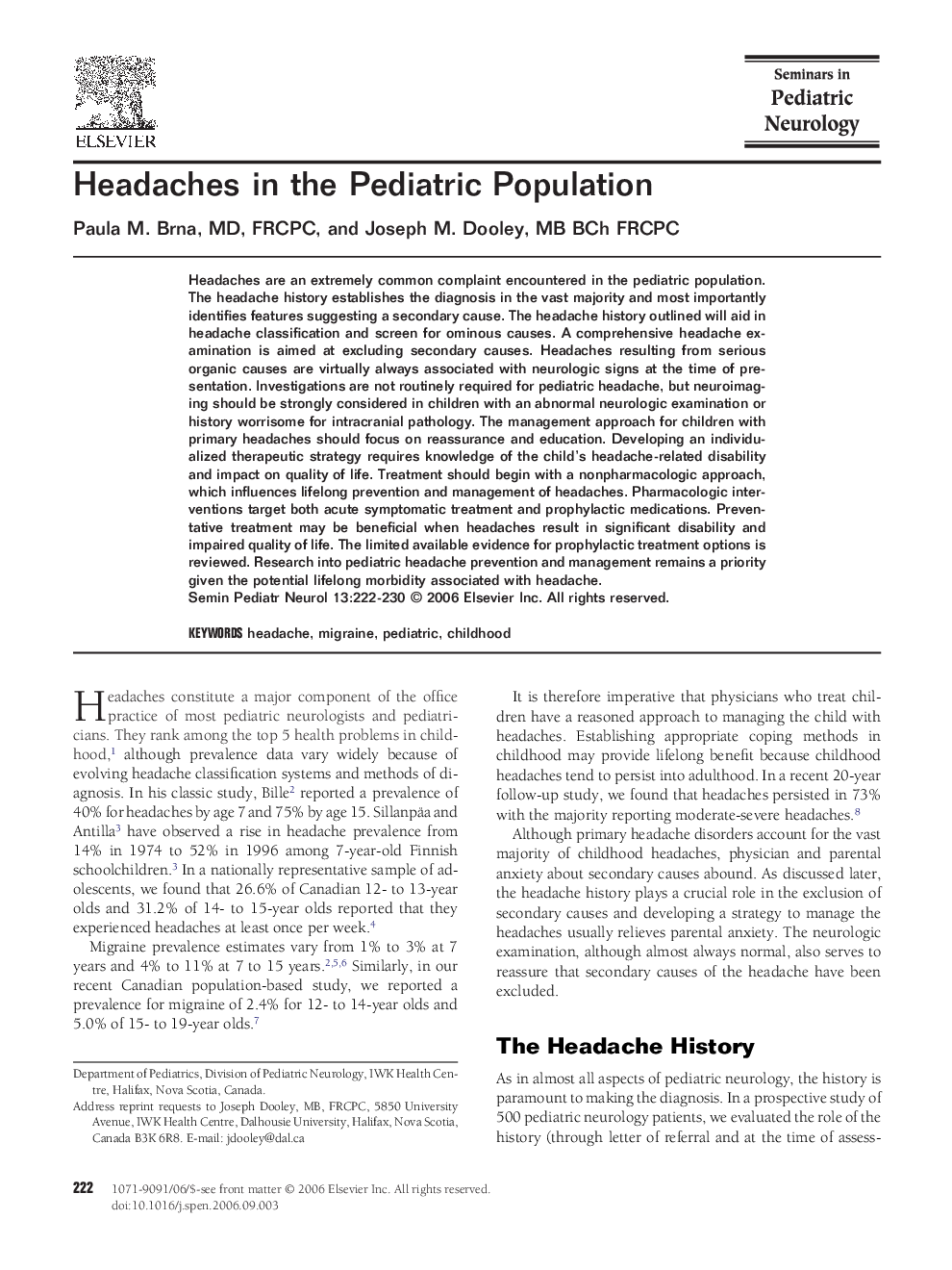| Article ID | Journal | Published Year | Pages | File Type |
|---|---|---|---|---|
| 3091179 | Seminars in Pediatric Neurology | 2006 | 9 Pages |
Headaches are an extremely common complaint encountered in the pediatric population. The headache history establishes the diagnosis in the vast majority and most importantly identifies features suggesting a secondary cause. The headache history outlined will aid in headache classification and screen for ominous causes. A comprehensive headache examination is aimed at excluding secondary causes. Headaches resulting from serious organic causes are virtually always associated with neurologic signs at the time of presentation. Investigations are not routinely required for pediatric headache, but neuroimaging should be strongly considered in children with an abnormal neurologic examination or history worrisome for intracranial pathology. The management approach for children with primary headaches should focus on reassurance and education. Developing an individualized therapeutic strategy requires knowledge of the child’s headache-related disability and impact on quality of life. Treatment should begin with a nonpharmacologic approach, which influences lifelong prevention and management of headaches. Pharmacologic interventions target both acute symptomatic treatment and prophylactic medications. Preventative treatment may be beneficial when headaches result in significant disability and impaired quality of life. The limited available evidence for prophylactic treatment options is reviewed. Research into pediatric headache prevention and management remains a priority given the potential lifelong morbidity associated with headache.
